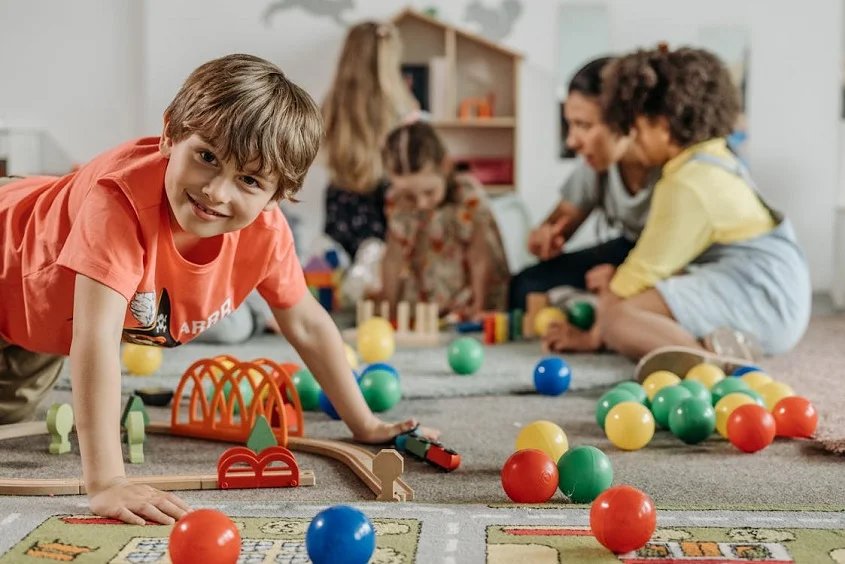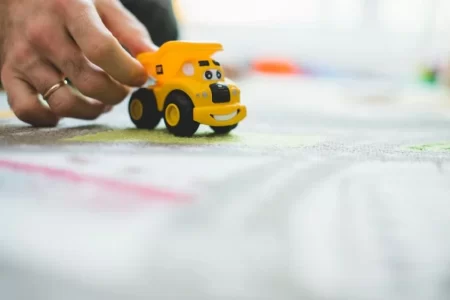From Milestones to Mastery: How Pediatric Therapy Builds Foundations
- Updated on: May 13, 2025
- 3 min Read
- Published on May 13, 2025

Every child is a story in motion. From the first babble to that wobbly first step, development is a complex orchestra of movement, sound, emotion, and connection. But what happens when that rhythm stumbles? When a child doesn’t speak at the “right” age, or struggles to make eye contact, or melts down at the texture of a shirt?
That’s where pediatric therapy steps in—not to “fix” children, but to meet them exactly where they are and help them thrive.
The Myth of “One Size Fits All” Development
We often talk about development as a checklist: crawling by 9 months, walking by 12, talking by 18. But children are not clocks; they’re not meant to tick along identically. In truth, development is messy, nonlinear, and influenced by a thousand visible and invisible things—genetics, environment, temperament, and even chance.
So when a child doesn’t quite follow the expected path, it’s not a reason to panic. It’s a reason to pause, observe, and ask thoughtful questions. Pediatric therapy answers those questions—not with judgment, but with support.
What Pediatric Therapy Actually Does
Let’s strip away the jargon. Pediatric therapy isn’t a room full of tiny dumbbells or flashcards (though yes, sometimes those are involved). It’s about helping children strengthen the skills that underpin how they move, speak, learn, and relate to others. There are different types of therapy that often overlap:
- Speech and Language Therapy helps children understand and use language, articulate sounds clearly, and even manage social communication.
- Occupational Therapy assists with fine motor skills, sensory processing, daily activities like dressing or writing, and emotional regulation.
- Physical Therapy focuses on gross motor skills like balance, coordination, strength, and posture.
- Feeding Therapy supports children who struggle with eating—whether due to texture aversions, motor challenges, or medical complexities.
- ABA and behavioural therapies are sometimes included for children on the autism spectrum or with behavioural challenges, focusing on positive reinforcement and functional skill-building.
It’s not about perfection. It’s about progress—and helping a child access more of their world, more comfortably.
Where Therapy Happens (Hint: Not Just a Clinic)
Many people still picture therapy as something that happens in a small, sterile office, but pediatric therapy has evolved. Therapy can now take place in homes, schools, playgrounds, or even during daily routines. The goal is to generalise skills, so a child doesn’t just zip a jacket in therapy—they can zip it before school, too.
That’s why programs that adapt to real-life environments are making such a difference. MetroEHS Pediatric Therapy, for example, offers in-clinic, in-home, and even teletherapy options, meeting families where they are—geographically and emotionally. This kind of flexibility helps therapy integrate into daily life, instead of existing as a separate “appointment” disconnected from a child’s everyday world.
Therapy Is Not Just for “Delays”
Another common misconception? That therapy is only for children with significant or diagnosed delays. That’s simply not true.
Therapy can be helpful for:
- A toddler with limited words who struggles to communicate wants and needs.
- A preschooler with coordination issues who avoids playgrounds.
- A kindergartener overwhelmed by classroom noise.
- A child with anxiety who avoids social interaction.
- Even a first grader who struggles with handwriting or tying shoelaces.
Think of it like tutoring, but for developmental skills. You wouldn’t wait for a child to fail math completely before offering help. Pediatric therapy works best when it’s proactive, not reactive.
The Role of Parents (Yes, You’re Part of the Team)
Parents often worry they’ve done something wrong when their child starts therapy. They haven’t. In fact, the best outcomes come when parents are viewed not as passive bystanders but as active, empowered partners.
Therapists will often model activities and then encourage parents to repeat them at home. This consistency matters. It’s not about being a “perfect” parent—it’s about being a present one, and knowing that everyday moments can be therapeutic: cutting playdough, blowing bubbles, narrating bath time.
When therapy flows into regular life, the progress multiplies.
When Progress Isn’t Linear (And That’s Okay)
One of the hardest parts of therapy is the wait. Parents want results, and fast. But just like a plant doesn’t grow on command, therapy takes time. Progress may be slow, uneven, or full of setbacks. That’s normal.
Therapy isn’t a straight line from “problem” to “solution.” It’s a spiral—sometimes up, sometimes sideways, but always moving.
Some weeks, a child might master a new sound. Other weeks, they might regress. However, each session still builds something important: confidence, trust, and tolerance for frustration. Those soft skills matter just as much as the tangible milestones.
Why This Work Matters
Pediatric therapy isn’t about hitting an arbitrary milestone faster—it’s about giving children the tools and support to engage with their world on their terms. It’s about connection, confidence, and small victories that make a big impact over time.
It’s a celebration of the “almosts,” the “not yets,” and the “look what I can do now” moments.
Conclusion: Foundations for Life
Pediatric therapy may start with small goals—holding a pencil, forming a sentence, climbing stairs—but the ripples extend far beyond childhood. It builds not only foundational skills but also resilience, adaptability, and a belief that challenges can be overcome.
And that? That’s not just therapy. That’s transformation.












